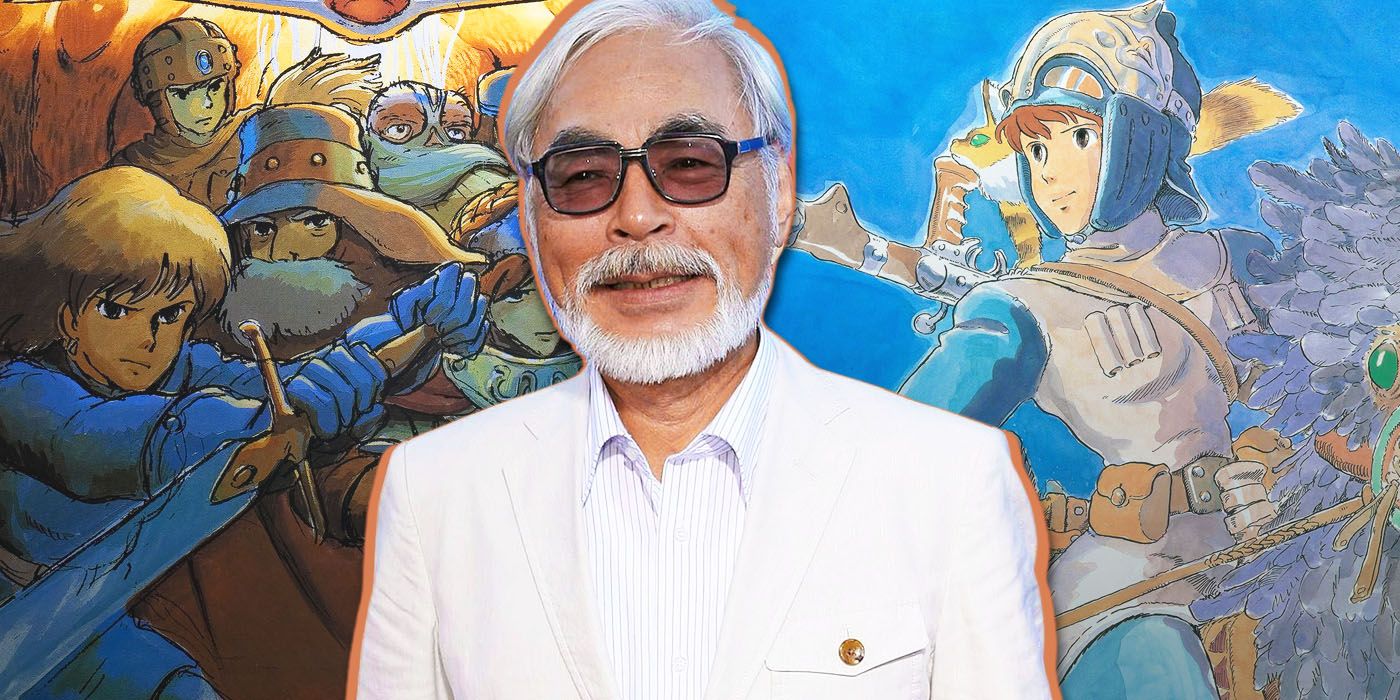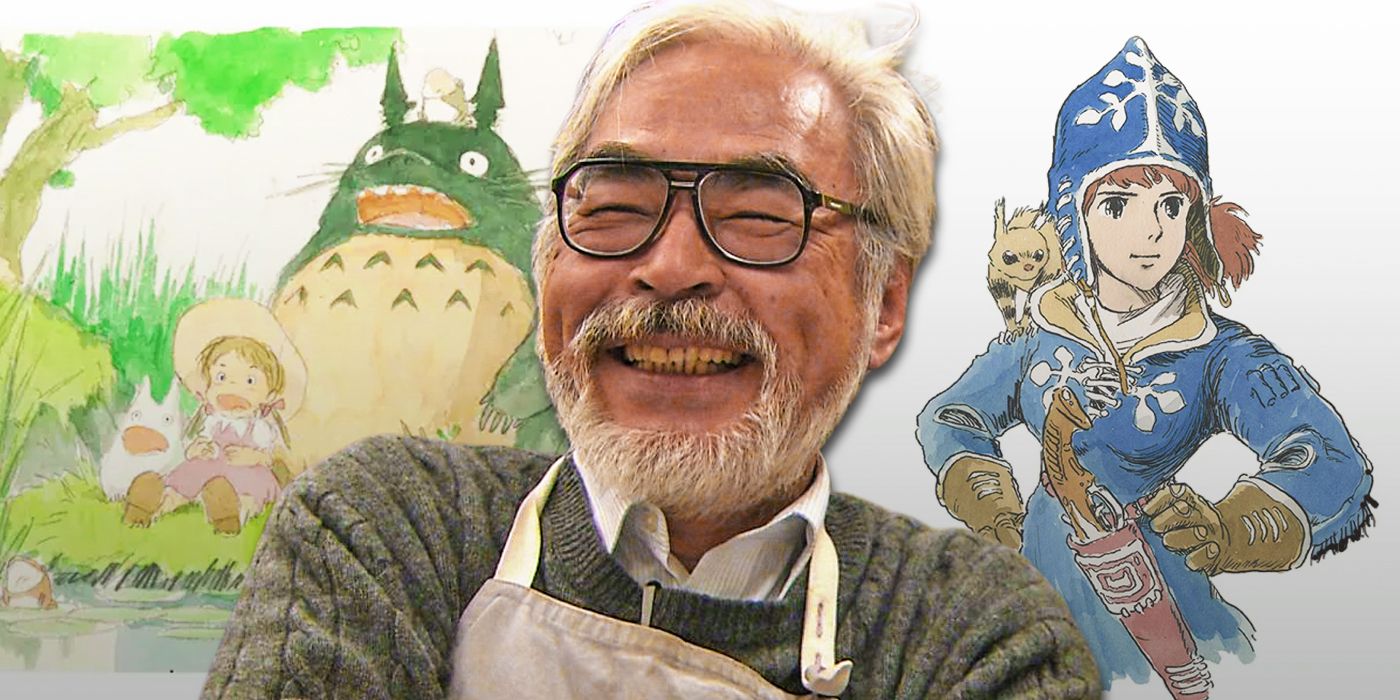Studio Ghibli films often have recurring themes, and one of them is chronic illness and disability. My Neighbor Totoro and The Wind Rises, in particular, have a central love interest and a side character love interest with chronic illness. Each woman is depicted with nuance and empathy, and never as one-dimensional.
Both films represent how illness affects Nahoko Satomi and Yasuko Kusakabe, and their respective families. Hayao Miyazaki seems to approach storytelling involving illness from a very nuanced and sympathetic perspective. Not only is compassion and emphasizing the humanity in everyone a general tenet of Studio Ghibli’s storytelling, but the illness in My Neighbor Totoro, particularly, comes from a personal place for him.
Nahoko Initially Hesitates to Marry Jiro Because of Her Illness in The Wind Rises
The Kusakabes Move to the Countryside to Be Closer to Yasuko in My Neighbor Totoro
My Neighbor Totoro begins when the Kusakabe family moves to the countryside. The father, Tatsuo, packs up his daughters, his books, and his family’s entire household and commutes from the countryside to the city for his university position so his girls can be closer to his wife as she recovers in a hospital. Mei and Satsuki Kusakabe’s mother, Yasuko, isn’t seen often in the film because of the nature of her illness, but the moments when she’s shown are beautifully written, and the story surrounding her and her family is thoughtfully told. Yasuko suffers with tuberculosis, and resides in a tuberculosis sanatorium. These hospitals were built in the countryside, where the air quality helped reduce the disease’s spread.

Related
14 Best Quotes From Studio Ghibli Founder Hayao Miyazaki
Miyazaki’s remained true to himself. His films address darkness and violence to teach young viewers how to deal with difficult issues with compassion.
My Neighbor Totoro is a story written for children, so while Yasuko is depicted with nuance and compassion, the story centers around her children’s experience and is meant to be a comfort to children who may have a relatable experience. It’s clear in the film Yasuko has a unique bond with each of her children. She is her youngest daughter Mei’s greatest comfort, and her eldest daughter Satsuki’s hero. She makes sure both daughters feel seen as the unique person they are. Tatsuo is also a devoted husband, and in the short moments where Yasuko is present in the film, Tatsuo shares a few moments alone with Yasuko where he speaks to her with charm and warmth, making her laugh and making sure she feels included in their daughter’s lives as she recovers.
The Wind Rises is written for an adult audience, and Nahoko plays more of a role in the film than Yasuko does My Neighbor Totoro. Jiro is the main character, and Nahoko is his love interest for the romantic subplot, but she is just as important to him as his planes. Jiro and Nahoko seem to fall in love relatively quickly, but Nahoko hesitates to marry him because she wants to recover first from tuberculosis. Unlike Yasuko in My Neighbor Totoro, though, recovery is not Nahoko’s story. Jiro and Nahoko live life together regardless of her illness.
Studio Ghibli Is Known for Writing Complex Girl & Women Protagonists
Even Ghibli Side Characters Are Complex
With protagonists like Nausicaä from Nausicaä of the Valley of the Wind, San from Princess Mononoke, and Chihiro from Spirited Away, Studio Ghibli is often praised for their strong women and girl protagonists. A character doesn’t have to be a protagonist to be written with care and meaning in a Studio Ghibli film, though. Such detailed and careful character work is a great part of what makes Studio Ghibli films so stellar.

Related
Resurfaced Hayao Miyazaki Quote Reveals Big Detail About Studio Ghibli Heroine
In a resurfaced viral post, Studio Ghibli filmmaker Hayao Miyazaki made shocking comments about one of the studio’s most popular anime heroines.
Nahoko is more of a love interest than a deuteragonist in The Wind Rises, and Yasuko is merely a minor character in My Neighbor Totoro. And yet, these women are absolutely vital to their communities in their stories. It’s a stereotype in storytelling to have an ill character serve as a plot device, turning them into character motivation or a symbolic plot consequence. Nahoko and Yasuko are the center of Jiro and the Kusakabe’s worlds. As love interests, Nahoko and Yasuko are also complex.
Nahoko and Jiro start out having a traditional historical romance courtship. They meet via happenstance and sparks fly between them. Nahoko expects their courtship to stop when she tells Jiro she’s ill with tuberculosis, only for Jiro to surprise her. He doesn’t see her illness as an inconvenience, or as something that will ever stop him from loving her or from wanting to be with her, binding his future to hers. Yasuko and Tatsuo also represent a mature kind of romance, a healthy and loving marriage. They are plainly weathering through a difficult part of life together as they are separated. Their connection remains, fostered by both of them for each other and for their daughters, and it’s very clear they will pick up where they left off once Yasuko is ready to go home.
My Neighbor Totoro Has Autobiographical Elements
Mei & Satsuki Were Inspired by Hayao Miyazaki & His Brother
Hayao Miyazaki turns his childhood pain and lessons into beautiful works of storytelling which bring comfort to children and ask adults important questions. In the years 1947-1955, when Miyazaki was a young child, his mother suffered from spinal tuberculosis, and most of his childhood was spent like Satsuki Kusakabe, helping at home with domestic tasks and visiting his mother in the hospital. My Neighbor Totoro is a direct response to some of Miyazaki’s defining childhood experiences.

Related
There’s a Reason Everyone Agrees This is the Best Studio Ghibli Movie
Spirited Away is the golden standard of anime films, and there are countless reasons why every anime fan will say it’s the greatest Ghibli movie.
Miyazaki said once in an interview that the reason that Mei and Satsuki are two sisters instead of two brothers is because it would have been too emotional for him. Miyazaki was the second of four sons. It also seems he had the closest bond with his mother. Any child witnessing their mother be so ill at so young an age is traumatizing, and it was obviously an effecting experience for Miyazaki. Eight years is a heartbreakingly long time for a child to wait for their mother to come home.
Hayao Miyazaki’s firsthand experience of growing up with a mother hospitalized with such a long-term illness is what gives the film such nuance and reality. It doesn’t take much to humanize Yasuko because My Neighbor Totoro is told through the eyes of her children, and Miyazaki draws on his own experience with his own mother. Thankfully for Mei and Satsuki, it appears they didn’t have to wait eight years to have their mother come home, like Miyazaki did.
Hayao Miyazaki Cares Deeply About Humanizing Illness
The Disabled Are Often Marginalized

Depicting overlooked parts of history in detail is important to Hayao Miyazaki. So is humanizing the marginalized of society. An example which combines both of these topics in film would be the characters with leprosy in Princess Mononoke. Hayao Miyazaki also chose to incorporate the lepers as working members of Lady Eboshi’s Irontown because of his own personal experience. Miyazaki said in an interview that he lived near a sanatorium for Hansen’s disease, and passed it every day on his commute.

Related
Which Studio Ghibli Movie is Hayao Miyazaki’s Best Work?
Hayao Miyazaki has produced iconic films like Spirited Away and My Neighbor Totoro… but this nature-friendly film stands apart as his masterpiece.
It’s important to Miyazaki to show more than the stereotypical kind of character types in every sort of film genre, from the children’s fantasy My Neighbor Totoro to the historical pieces, The Wind Rises and Princess Mononoke. If too many stories devolve into stereotypical character types, it’s all too easy to assume heroism and adventures and magic are only for a certain kind of person. It’s also powerful that Nahoko is a love interest in The Wind Rises. The Wind Rises doesn’t use illness in romance and relationships as a cheap way to heighten melodrama, but to explore real — and sometimes stigmatized or sometimes ignored — parts of the human experience.
Nahoko & Yasuko Are Beloved & Resilient Women
The Wind Rises & My Neighbor Totoro Show Women Valued by Their Communities

Studio Ghibli painstakingly shows with each uniquely written character, be it a side character or hero, that love, strength, and resilience comes in all forms. My Neighbor Totoro and The Wind Rises may be vastly different stories for very different audiences, but they both capture very authentic parts of the human experience. Where ableism dehumanizes the disabled and the sick, these two films take great care to show illness in a compassionate and humanizing way.
Studio Ghibli films routinely show a world that is aspirational in many ways. Yasuko and Nahoko don’t have perfect lives, but they are valued for exactly who they are, and the unique value they bring to the world. It seems not at all surprising that these would be the artistic visions of a boy who loved and admired his mother, who was both an amazing, unique person, and experienced a disabling chronic illness.








